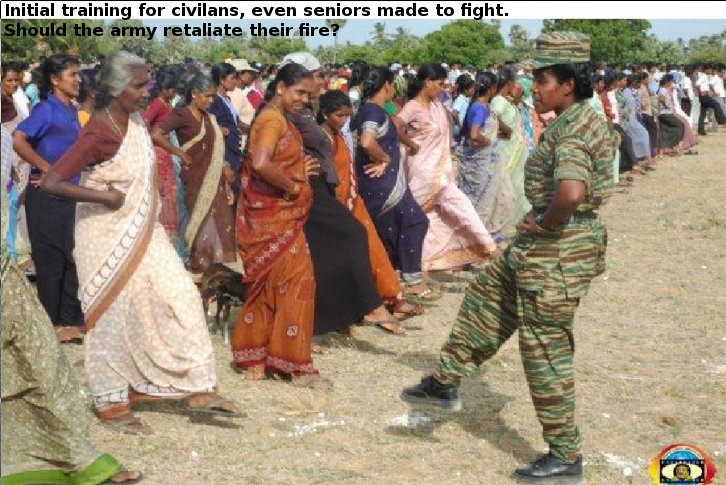
Known as one of the most deadly terrorist groups the world has ever witnessed, the LTTE were masters of suicide warfare as well as being adept in conventional and guerrilla tactics. The LTTE’s infamous reputation precedes itself. The Sri Lankan Army (SLA) fought four wars with the LTTE, which spanned almost 3 decades. The Indian Peace Keeping Force (IPKF) and the LTTE engaged in several battles and this bad blood eventually led to the assassination of India’s Prime Minister Rajiv Gandhi by the LTTE. Read more: Key events in Sri Lanka political crisis The Indians, however, changed their policy when they discerned that the civil war in Sri Lanka could disrupt its own national security and in turn sent a peacekeeping force. The LTTE was initially funded, trained, and supported with arms and equipment by India. The Sri Lankan civil war erupted in 1983 and resulted in the deaths of thousands of combatants and non-combatants alike – some died in ethnic riots between Tamils and Sinhalese, while others in the battles between the government and the LTTE insurgents. The LTTE and the insurgency had ethno-nationalist proclivities instead of religious, as the group’s main demand was the creation of a Tamil homeland in the island’s north and east.īy the late 1980s, VP’s LTTE had destroyed or absorbed other Tamil separatist groups and had become the principal avenue for Tamil separation desires. In 1972, Velupillai Prabhakaran (VP) took charge of a group called the Tamil New Tigers, which eventually became the LTTE (Liberation Tigers of Tamil Eelam) or Tamil Tigers in 1976. Fast forward to the 1970s, a plethora of Tamil separatist groups began rising up due to the ill-treatment of their people.


The Sinhalese adopted nationalist policies and laws – such as making Sinhala the official language of the country, granting special status to Buddhism (the religion of most Sinhalese), and preferring Sinhalese people in important positions to the dismay of Tamils. Western COIN presumes that an insurgency cannot be quashed without the support of the population and that military operations are a means to an end. Post-British departure from the island and subsequent independence in 1948, the Sinhalese reversed their fortunes but now at the expense of the Tamil minority. The British, therefore, sowed the seeds for a future ethnic clash between the Sinhalese and the Tamils. While the Empire ruled the island, it favored the minority Tamils in civil service appointments, educational institutions, and other key positions at the expense of the majority Sinhalese.

The Tamil insurgency’s roots have an unfortunate yet not uncommon association to the British Empire and its divide-and-rule policy.

Before I begin reflecting upon the facets of the Model, some history of the insurgency and actors must be highlighted briefly to fully appreciate and comprehend it. Notwithstanding the indiscriminate violence, the Model left a bold impression, as it is one of the few instances where an insurgency was defeated militarily and so it should impart vital caveats for future and existing COIN discourses. Contrastingly, the Sri Lankan Model used concerted and indiscriminate military force as its primary modus operandi to overwhelm and dismantle the insurgency – making it a non-population centric model.


 0 kommentar(er)
0 kommentar(er)
